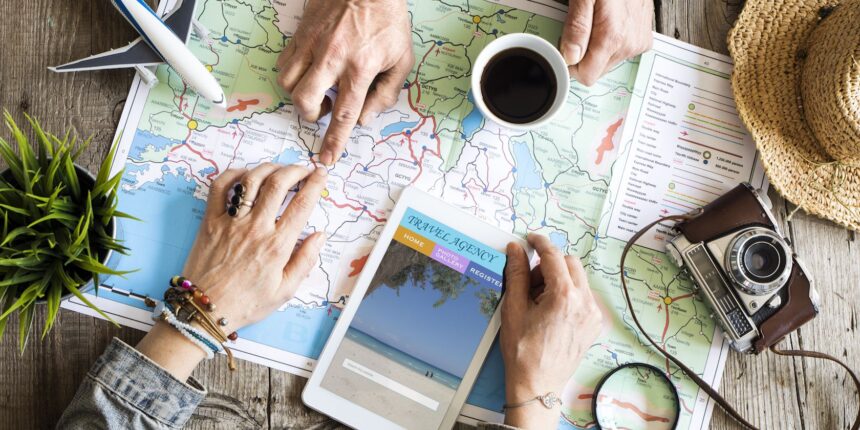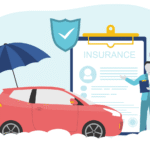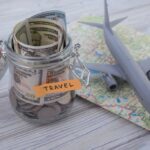So, you’ve got the travel bug. You’re imagining turquoise waters, old ruins, busy cityscapes, or peaceful mountain peaks. The unknown is calling to you, but there’s a big problem between your daydreams and your departure: you have to plan the trip itself. This can seem as hard as climbing Mount Everest for a first-time traveler. But don’t worry, brave explorer! This all-in-one beginner travel guide is like a map, a compass, and a friendly, knowledgeable friend all in one. We’re about to start planning our vacation, which will turn that feeling of being overwhelmed into pure, unadulterated excitement. This guide is over 4000 words long, and by the end of it, you’ll not only know how to plan a trip, but you’ll also have the tools and confidence to do it again and again.
The truth is that careful planning is the key to a smooth, stress-free trip. It’s the framework that will hold up the wonderful memories you are about to make. We’ll break the process down into small, easy-to-digest steps, from the first idea to the time you walk back through your front door, full of stories to tell. So get a drink and a new notebook (or a spreadsheet, if you want), and let’s get started on the art and science of planning the perfect vacation.
Phase 1: The Dream and the Destination—Building the Foundation
Every great trip starts with a single idea. This first stage is all about looking inside yourself and getting ideas. It’s where you let your mind run wild before bringing it back to reality with facts.
Answering the “Why”: Why You Want to Travel
Before you even think about “where,” take a moment to think about “why.” Your reasons for traveling will have a big impact on where you go and what you do. Are you looking for:
- Relaxation and Refreshment? Maybe your perfect getaway is a beach in the Maldives that gets a lot of sun, a peaceful spa retreat in Bali, or a cabin in the woods that is hard to find.
- Adventure and excitement?** Imagine zip-lining through the Costa Rican rainforest, hiking the Inca Trail to Machu Picchu, or scuba diving in the Great Barrier Reef.
- Cultural Immersion? You might be drawn to the colorful streets of Tokyo, the rich history of Rome, or the spiritual center of Varanasi.
- **Self-Discovery and Personal Growth?A trip by yourself with a backpack through Southeast Asia, a volunteer program in a developing country, or a silent meditation retreat could change your life.
- **Getting closer to family?A classic Disney World trip, a cruise with people of all ages, or a trip to a national park to learn could all make memories that last a lifetime.
Your “why” is your North Star. It will help you find places and things to do that really match what you want, making sure that your experience is meaningful and fulfilling. The Worldpackers blog is a great place to learn about different ways to travel, from volunteering to backpacking.
From a World of Choices to a List of Dreams
The fun part starts when you know what you want to do on your trip: coming up with ideas for places to go! You can do anything you want in the world, which can be exciting and scary at the same time. This is how to make it smaller:
- Make a list of places you want to visit: If you don’t already have one, start now! Make a visual board of places that interest you using sites like Pinterest. Keep articles, pictures, and videos that make you feel good.
- Think About the Time of Year: The time of year will affect where you can go. Look into the weather patterns and peak and off-peak seasons for the places you might want to go. Traveling during the shoulder season, which is the time between peak and off-peak, can often mean fewer people and lower prices.
- Think about how long you can be away: How long can you really be away? A weekend trip is best for places in the US or close by, while a two-week vacation lets you go on long-haul trips. Don’t forget to include the days you spend traveling to and from your destination.
- Initial Budget Thoughts: We’ll talk more about budgeting later, but having a general idea of what you can afford will help you narrow down your choices. A week in Switzerland will cost a lot more than a trip to Southeast Asia.
Tip for Daily Life: Use this “why” and “what” method to set smaller goals in your life. Before you start a new project at work or in your personal life, think about why you want to do it. This clarity will boost your motivation and help you get better results.
Phase 2: The Nuts and Bolts—Making Your Travel Plan
It’s time to get down to business now that you have a destination (or a few good options) in mind. This is when your dream starts to become real.
The Budget: Your Financial Map
A budget that is well thought out doesn’t limit you; it gives you freedom. You can enjoy your trip without worrying about going over budget. Here is a step-by-step guide to making a realistic travel budget:
- Figure Out Your Biggest Costs:
- Flights/Transportation to Destination: This is usually the biggest cost up front.
- Place to stay: Look up the average price of hotels, hostels, or Airbnb rentals in the place you want to go.
- Things to Do and See: Write down the things you really want to do and their rough costs.
- Food and drinks: A big cost every day. Find out how much an average meal costs.
- Travel Insurance: An expense that can’t be avoided on any trip.
- Don’t Forget About the Little Things:
- Visas and Passport Renewals: Make sure you know what you need to do to get into your destination well in advance.
- Vaccines and Medicines: Talk to your doctor or a travel clinic.
- Getting Around Locally: How will you get around after you get there?
- Shopping and Souvenirs: Give yourself a budget.
- Emergency Fund: It’s smart to have some extra money set aside for emergencies.
A simple spreadsheet is a useful tool for making and keeping track of your budget. There are a lot of free templates available online. If you want more detailed advice on how to budget for a trip, check out Wanderfully Rylie’s great step-by-step guide.
Saving for Your Adventure: Making Your Dream a Financial Reality
How do you get to your target number now that you have one?
- Open a Separate Savings Account: Don’t mix your travel money with your regular money.
- Make Your Savings Automatic: Set up automatic transfers to your travel account every payday.
- Cut Back on Things You Don’t Need: That daily latte or frequent takeout order can add up.
- Get rid of things you don’t want: Clear out your home and make some money.
- Get a Side Job: Working a few extra hours a week can help you save a lot of money.
Useful Tip for Everyday Life: You can use the same discipline you use to make a travel budget and save for it in your everyday finances. It’s a great way to learn how to handle your money and reach bigger financial goals, like saving up for a house or paying off debt.
The itinerary is a flexible framework, not a strict schedule.
Your itinerary tells the story of your trip. It’s a plan for each day of what you want to do and see. But the most important thing about a good itinerary is that it can change.
- Research, Research, Research: Get to know your destination very well. Read travel blogs, watch vlogs on YouTube, and look at guidebooks. Meet Me In Departures is a great place to start your in-depth research.
- Make a list of the things you have to see first: You can’t do everything. Write down the things you absolutely can’t live without.
- Map it Out: Use a service like Google My Maps to mark the places you want to go. This will help you organize activities by where they are and cut down on the time it takes to get from one to the next.
- Take Your Time: One of the most common mistakes first-time travelers make is planning too much. Don’t try to do too much in one day. Set aside time for rest and unexpected discoveries.
- Plan Your Key Activities Ahead of Time: You can save hours of waiting in line for popular attractions like the Eiffel Tower or Alcatraz by booking tickets online ahead of time.
Phase 3: The Booking Bonanza—Making It Official
It’s time to start making promises now that you have a plan. This is when your trip really starts to feel real.
Flights: Your Way to See the World
It can be a game of strategy and timing to book flights. Here are some important travel tips for getting the best deals:
- Be Flexible with Your Dates: It’s usually cheaper to fly on a Tuesday or Wednesday than on a weekend.
- Use Websites That Compare Flights: Google Flights, Skyscanner, and Momondo are some of the best tools you can use. They look through many airlines at once to find the best deals.
- Look at Nearby Airports: Sometimes, flying into a smaller, less busy airport can save you a lot of money.
- Book in Advance (But Not Too Far): For domestic trips, the best time to book flights is usually 2–3 months in advance. For international trips, it’s usually 3–5 months in advance.
- Go Incognito: Some booking sites might keep track of your searches and raise prices. This can be avoided by using a private or incognito window to browse.
Your Home Away From Home
Your trip can be ruined or made by the right place to stay. When deciding where to stay, think about how you like to travel and how much money you have.
- Hotels: They have a lot of different amenities and are a good choice for comfort and convenience.
- Hostels: A cheap choice, especially for people traveling alone who want to meet new people. A lot of them now have private rooms too.
- Vacation Rentals (Airbnb, Vrbo): Great for groups or longer stays because they give you a more local and independent experience.
- Guesthouses and B&Bs: These are usually run by families and have a warm, personal touch.
When you book, make sure to check the location, read recent reviews, and look at the cancellation policy. Booking.com and Hostelworld are two great websites to use.
Tip for Daily Life: The research skills you learn when you book flights and hotels—like comparing prices, reading reviews, and understanding terms and conditions—are very useful in everyday life. When you buy something big, like a new appliance or a car, use them.
Travel Insurance: The Best Way to Stay Safe
This guide’s most important piece of advice is to never travel without travel insurance. It’s a small cost that could save you a lot of money if you have a medical emergency, have to cancel your trip, lose your luggage, or something else unexpected happens. World Nomads, SafetyWing, and Allianz Travel are well-known and trusted companies. Read the policy carefully to see what is and isn’t covered.
Phase 4: The Last Steps—Checking Off the To-Do List
You have your flights and hotel booked, and your departure date is getting closer. This part is all about the last-minute things that will make your trip go smoothly and be fun.
Passport, Visas, and Documents: The Things You Can’t Change
- Passport: Make sure your passport is still valid. A lot of countries want it to be good for at least six months after you plan to leave.
- Visas: Make sure you know what kind of visa you need for your trip well in advance. It can take weeks or even months to get some visas.
- Make Copies: Make both paper and digital copies of your passport, visa, flight confirmations, hotel reservations, and travel insurance. Put the digital copies in a safe cloud service, such as Google Drive or Dropbox.
Health and Safety: Your Safety on the Road
- Talk to a Professional: Go to your doctor or a travel clinic at least 4–6 weeks before your trip to talk about the vaccinations you need and get any prescription drugs you need.
- Bring a First-Aid Kit: Make sure to include things like pain relievers, bandages, antiseptic wipes, and any medications you take regularly. This guide from Northwestern Medicine has a full list.
- Stay Informed: Before you leave, look at the travel warnings for where you’re going.
- Know What’s Around You: When you get there, keep an eye on your things and don’t walk alone at night in places you don’t know.
Packing Like a Pro: Less is More
Packing too much is a common mistake for beginners. A heavy suitcase is a real pain. Here’s how to pack well:
- Pick the Right Luggage: A backpack is great for trips where you want to do a lot of things, while a rolling suitcase is better for trips to the city.
- Write Down What You Need to Pack: This will help you remember what you need and not pack things you don’t need.
- Bring clothes that can be worn in different ways: Choose clothes that can be mixed and matched and dressed up or down.
- Use Packing Cubes: These will help you stay organized and save space.
- Roll, Don’t Fold: Rolling your clothes keeps them from getting wrinkled and makes the most of the space.
- Make Some Space: You’ll probably want to bring back some souvenirs.
Money Matters: How to Get Your Money While You’re Traveling
- Tell Your Bank: Let your bank and credit card companies know that you’re going on vacation so they don’t freeze your cards because they think you’re doing something shady.
- Have a Variety of Payment Options: For small purchases, have at least two credit or debit cards and some local currency.
- Don’t use airport currency exchanges; they usually have bad exchange rates. When you get there, it’s usually better to take money out of an ATM.
- Know the Fees: Be aware of the fees your cards charge for transactions made outside of the US.
Useful Tip for Daily Life: The skills you need to get ready for the final phase can also be used to handle your daily tasks. Making to-do lists and getting ready ahead of time can help you relax and get more done in all areas of your life.
Phase 5: The Journey Begins – Have Fun on Your Trip
You planned, packed, and finally got there. This is what it was all for!
Accepting the Experience: Be Open-Minded and Present
- Disconnect to Reconnect: It’s easy to want to share everything on social media, but you should take some time to put your phone away and enjoy the moment.
- Try New Things: Step outside of your comfort zone and try the local food, learn a few words in the local language, and do something new.
- Talk to People Who Live There: They can give you the best tips and information about their culture.
- Go with the Flow: Things don’t always go as planned when you travel. Accept the unplanned turns and problems; they often make the best stories.
Staying in Touch (or Not)
Pick a way to stay in touch. You can buy a local SIM card, use an eSIM service like Airalo, or just use Wi-Fi at your hotel or in cafes. Downloading offline maps from Google Maps is a lifesaver when you don’t have a data connection.
Phase 6: The Return and Reflection—The Journey After the Journey
The fun doesn’t stop when you get back on the plane. The time after the trip is an important part of the travel experience.
Getting over the post-vacation blues
It’s normal to feel sad after a great trip. Here’s how to make the return to reality easier:
- Give Yourself a Buffer Day: If you can, come home a day or two before you have to go back to work. This gives you time to settle in, do laundry, and unpack.
- Make Plans for Something Fun: It could be a dinner with friends, a hike on the weekend, or even just a cozy night in with your favorite movie.
- Think about your trip: Go through your pictures, write in a journal, and tell your loved ones about it.
- Plan Your Next Trip: The best way to get over the post-vacation blues is to have another trip coming up!
Making Your Travels a Part of Your Life
You change when you travel. It makes you think about things in a new way, teaches you new things, and makes you question what you think you know. Think about what you’ve learned and how you can use those lessons in your daily life. You might have found a new love for a certain kind of food, a more laid-back way of living, or a greater appreciation for the comforts of home.
Tip for Daily Life: Thinking about things is a great way to grow as a person. Take some time every day to think about your experiences, both big and small, and what you can learn from them.
Your Journey Awaits
Planning a trip, especially for someone who has never been there before, is a journey in and of itself. It’s a process of finding out, putting things in order, and looking forward to things. This beginner travel guide will teach you more than just how to plan a trip; it will give you a skill that will last a lifetime. You are giving yourself the power to travel the world with confidence and curiosity.
The key to a world of amazing experiences is good vacation planning. It starts with the first spark of inspiration and ends with the memories you’ll cherish forever. So, where will your first (or next) adventure take you? The world is waiting.
Source Links:




